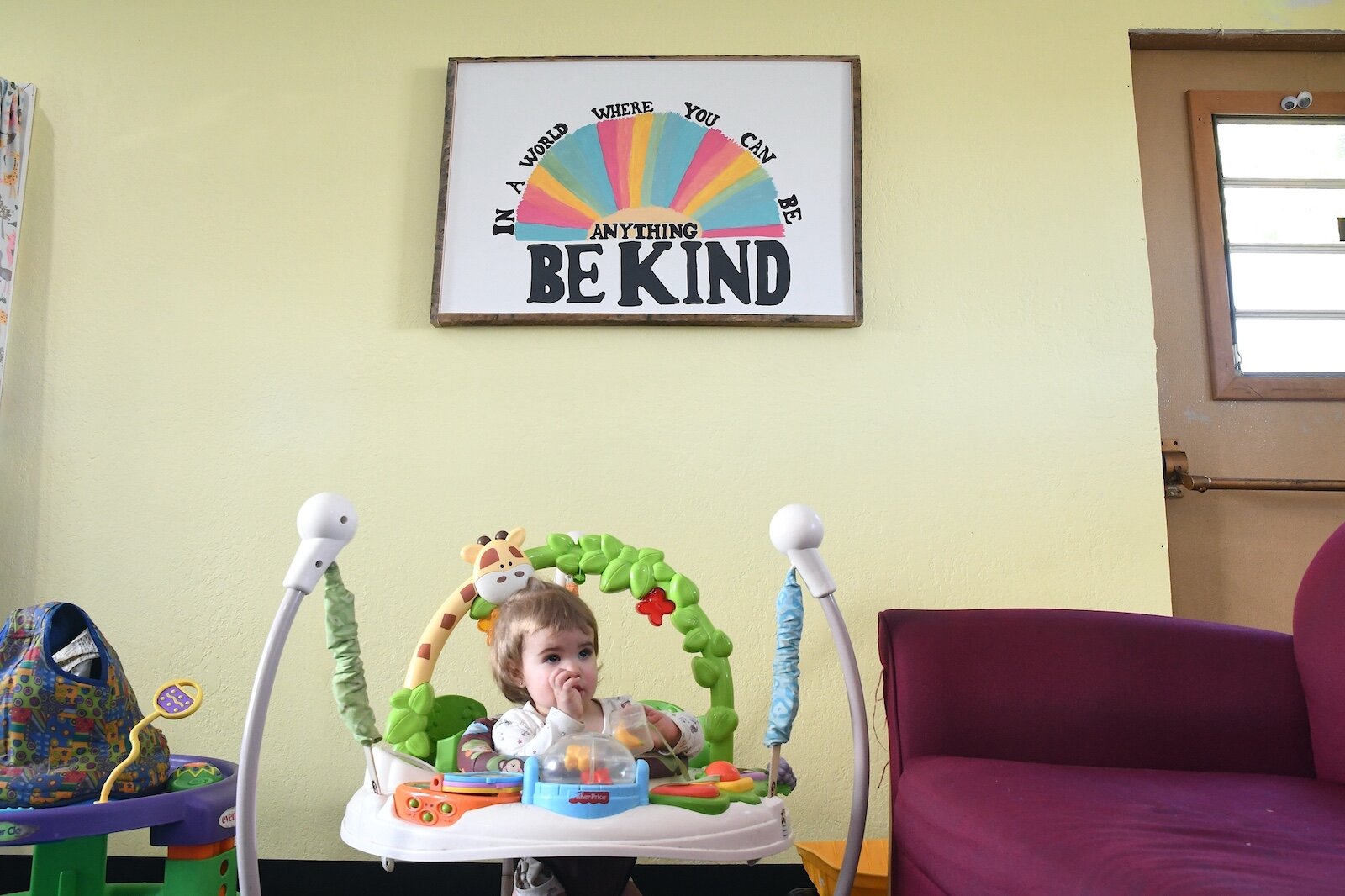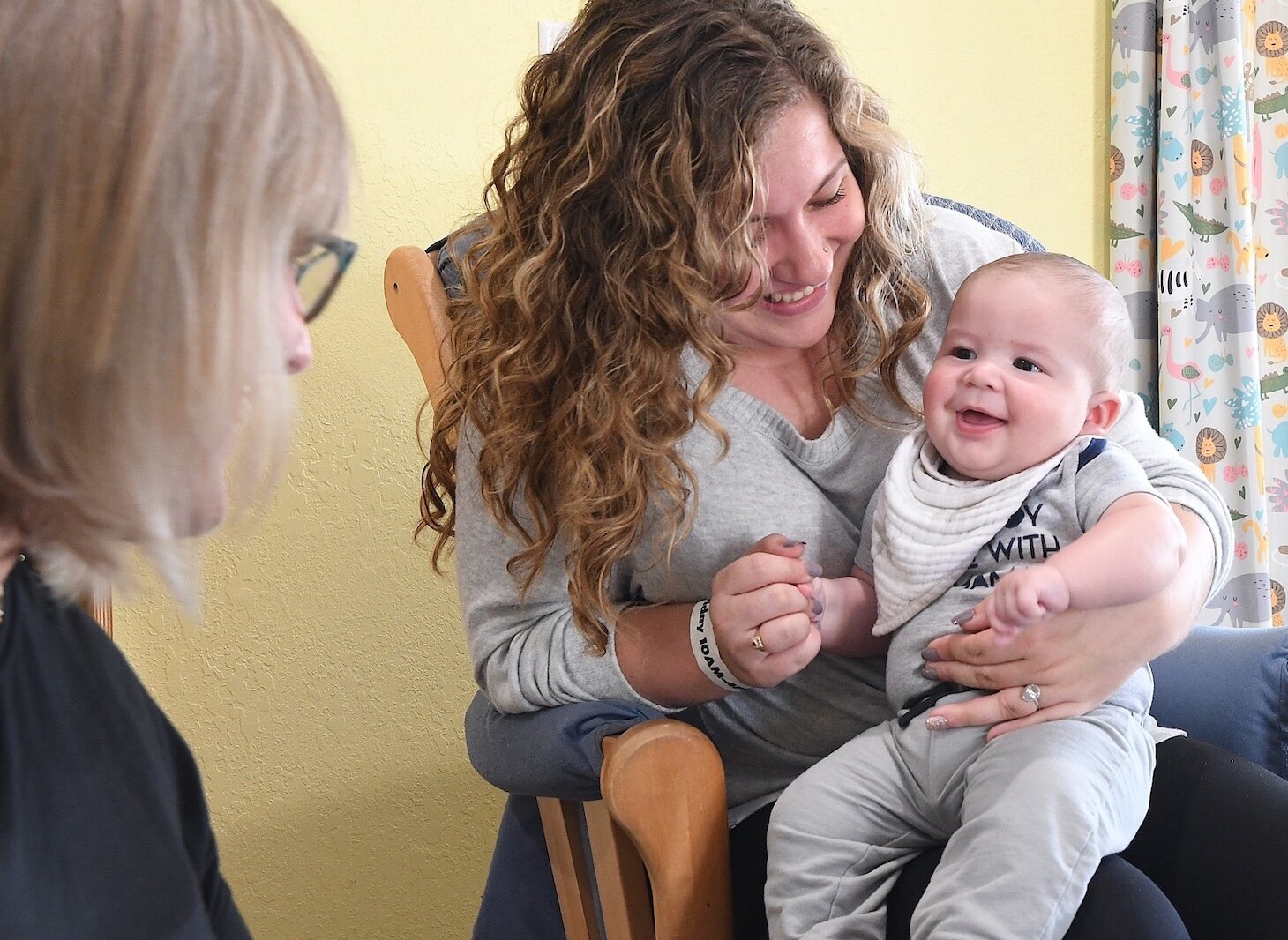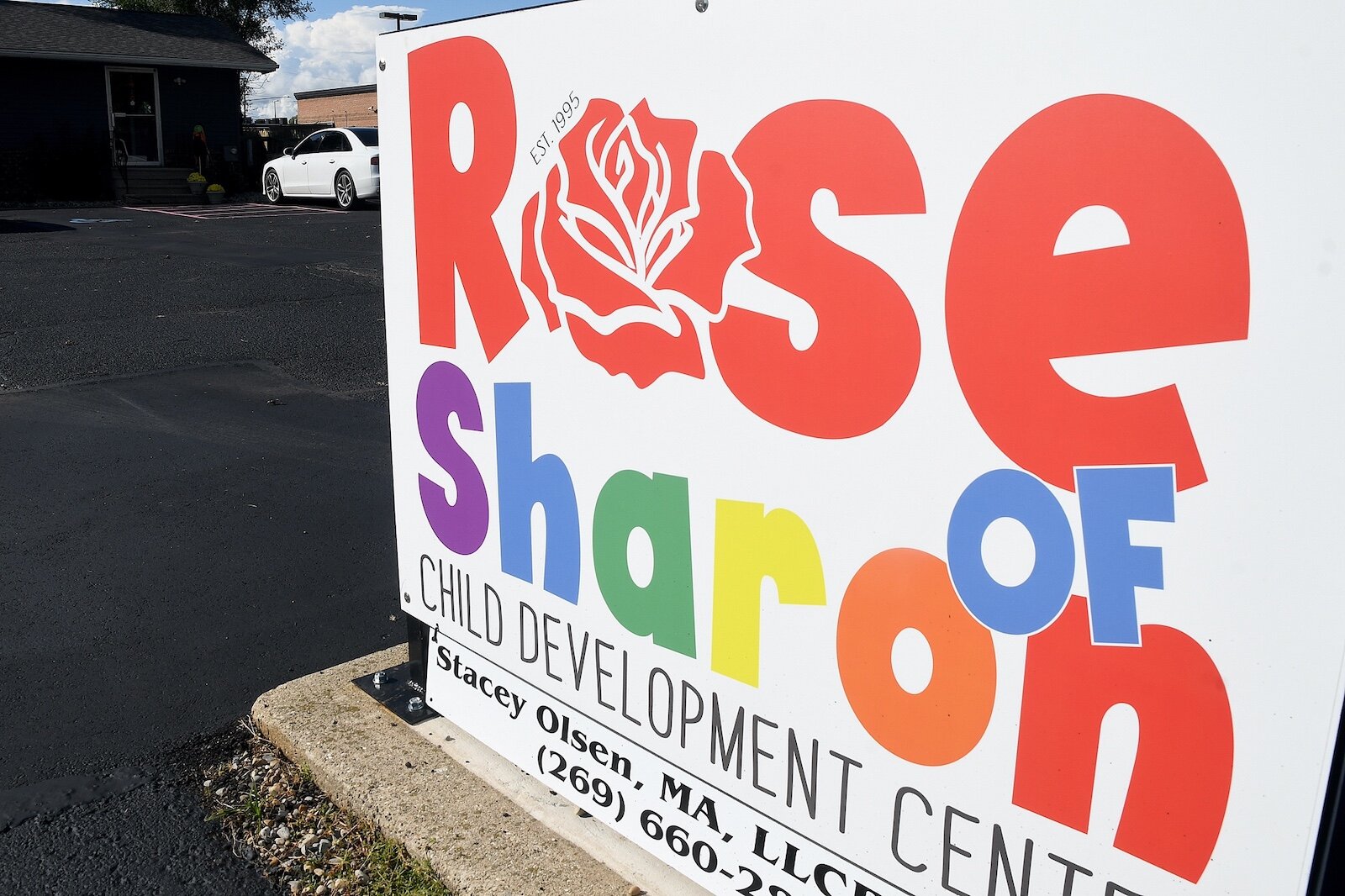The MI Tri-Share Child Care pilot in which the cost of child care is divided three ways was launched by the Michigan Women’s Commission.
Editor’s note: This story is part of Southwest Michigan Second Wave’s On the Ground Battle Creek series.
Jennifer Adkins’ experience is an example of the work and career opportunities available to women who have the financial means to pay for quality, affordable child care.
Adkins, who works for the Kellogg Company and is raising three school-age children, says she knows she and her former husband were fortunate to find child care situations where they knew their children were being well-cared for. However, paying for this care was not without its share of financial sacrifices.

“When all three were in child care, it was anywhere between $1,200 and $1,500 a month. It did put a financial burden on us. Child care for three kids is a mortgage payment and then some,” Adkins says. “At the same time, with the lifestyle we had, not working wasn’t an option for me. When you have a mortgage and car payments and regular everyday expenses like utilities, groceries, and gas for the car, you start asking yourself, ‘What can I put off today?’ or ‘How can I cut back and save to make this all work?’”
That financial burden and those questions only multiplied for her when she became a single parent three years ago. At first, she and her ex-husband were sharing the child care expenses, and then that cost was put squarely on her shoulders. She paid $500 a month for her youngest child, a daughter now in kindergarten, to attend the Rose of Sharon Childcare Center at 100 South Woodrow Ave. Her two older children, ages 10 and 9, attended the Learning Zone.
Adkins says she could have opted for a less expensive option, but knowing that her children were being well-cared for in an environment focused on learning, gave her the peace of mind she needed to continue to work and support herself and her children. She says she knows many women, those who are married and those who are single parents, who are working or want to work outside the home to support their families are facing obstacles to attaining child care.
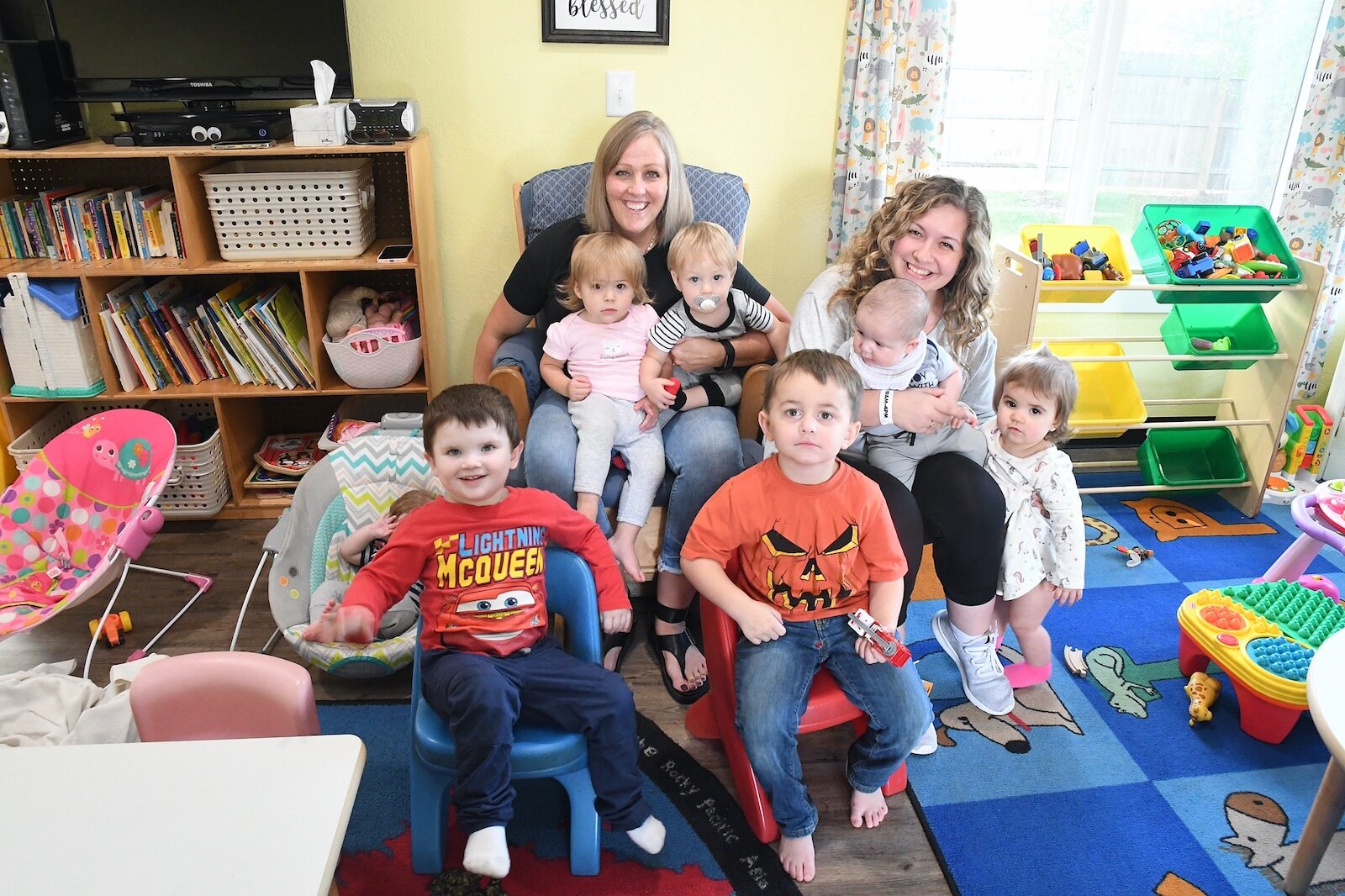
Many of these women have left the workforce and have not returned, says Cheryl Bergman, CEO of the Michigan Women’s Commission.
A report compiled by Michigan’s Department of Technology Management and Budget released earlier this year titled “Women in the Michigan Workforce,” shows that between February and December 2020, about 136,000 women left the labor force, equal to a 5.8 percent decline. By July of this year, that number had jumped to 229,000, Bergman says.
These state numbers mirror what is happening nationally, says Michael Horrigan, president of the W.E. Upjohn Institute for Employment Research based in Kalamazoo.
“In August, there were 5.8 million folks who were out of the labor force. Their reasons included a lack of child care, family responsibilities, they were currently in school because they needed to get additional training, or there were no jobs available,” Horrigan says. “About 1 million in that total number cited three reasons in particular, child care, transportation, and family issues. Of this group, 60 percent are females without a Bachelor’s degree and 21 percent of them are white, non-Hispanic and the remainder are minority females, non-white Hispanic as well as Black. That’s a huge percentage.”
When Horrigan hears people saying that all of these people are collecting unemployment and aren’t looking for work, he says, “There are some, but I’m looking at people who want to work and have these barriers.”
Although there is not yet quantifiable data to explain why these women have left the workforce, Bergman says based on a survey the Michigan Women’s Commission conducted in 2020, “We can anecdotally tell that child care is a big issue to getting women back to work and into the workforce. The pandemic really shines a light on the lack of affordable, accessible, quality child care.”
Parents told Bergman’s organization that they were keeping their children at home because their child care center was closed, or they were fearful of illness as schools reopened, or they had to be home with kids who were in virtual school.
During the pandemic numerous child care centers were forced to close their doors, some temporarily and others for good, Bergman says. At the same time, those that have reopened or never closed have been forced to reduce the number of children they can care for because they can’t find workers.
Stacey Olsen, owner of the Rose of Sharon, is one of those who never closed her doors. She says, “when COVID first reared its ugly head,” she asked her one full-time worker, Skyleen Kosarue, who has worked for her for five years if she felt comfortable coming into work. Kosarue decided to take two months off while Olsen kept the daycare open. Olsen has been a licensed child-care provider for 27 years, 25 of those years out of her home, and the last two years at the child-care center she opened.
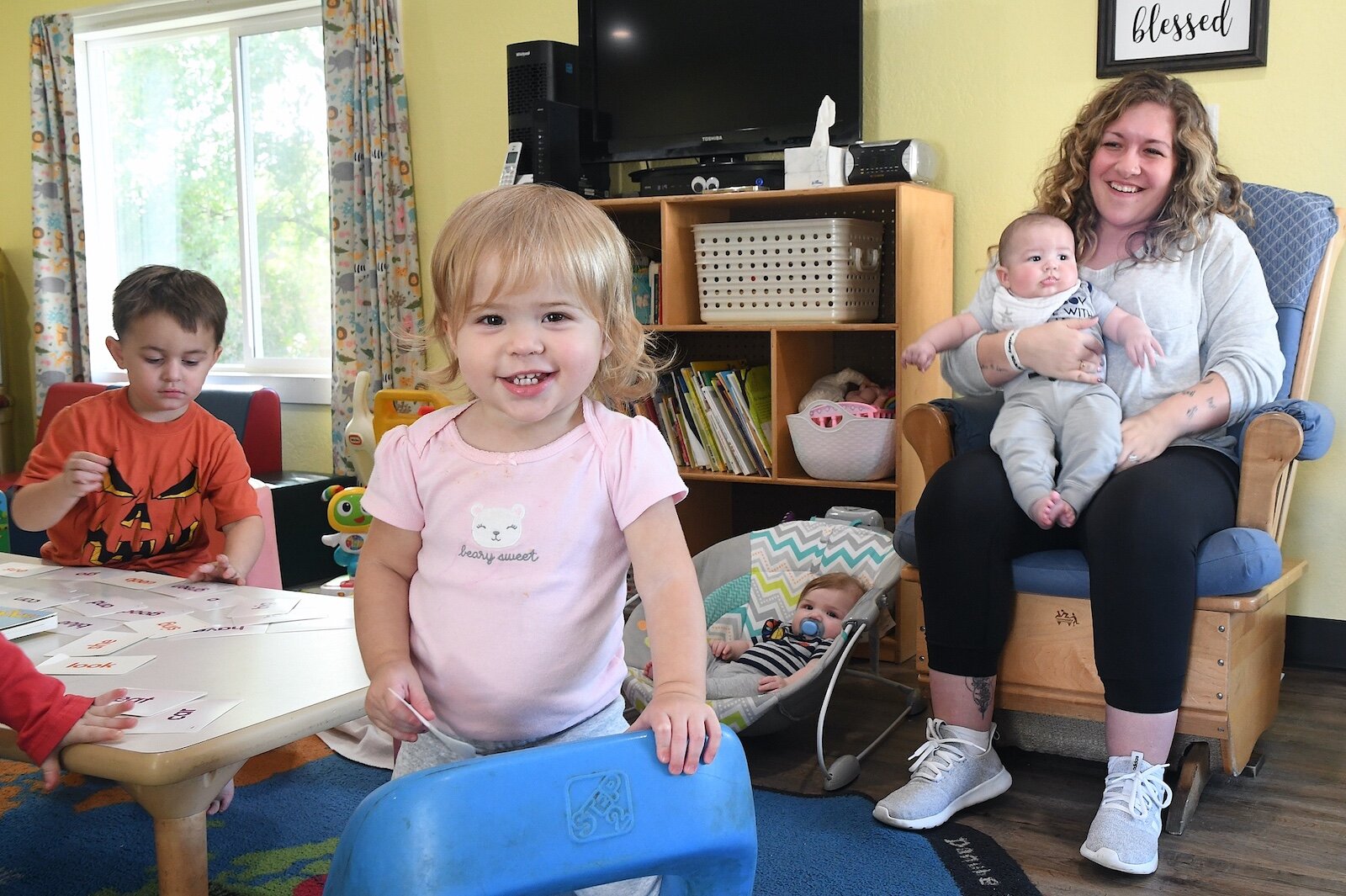
“I never closed my daycare. I was blessed to stay open,” Olsen says. “I was limited to six children because I didn’t want to risk anyone else coming in. I had the children of essential workers like police officers, nurses, and food service workers.”
She is licensed to care for 12 children at any one time. Currently, the oldest child she cares for is a 12-year-old who comes during the summer and the youngest is a six-week-old. Since January, she has had a waiting list of 24 families, many of whom contacted her about enrolling their children.
Last week she had two parents and a grandmother call to see if she had any slots available.
Kathleen Moore, who has been working in early childhood education for more than nine years and is the Executive Director of the Battle Creek Shared Services Alliance, says, “I think we’ve been at this place for a long time, where parents are deciding between their job and child care. What’s new is that we’re facing serious shortages in availability. We don’t have a single child-care center here that doesn’t have multiple openings for new staff. The biggest shortage is in staff and this impacts families significantly.”
In March, the National Women’s Law Center estimated the child-care industry had lost 172,000 jobs since the start of the pandemic.
Battle Creek Shared Services Alliance, provides services such as centralized billing and enrollment services, professional development, technical assistance, and professional development to child-care centers that pay a monthly membership fee.
Moore says the child-care crisis is coming to a head because of “everything we’ve faced in the last 18 months. The tragedy is when families are choosing who’s going to stay home to care for their children it’s generally the mothers. We’re losing women in the workforce way more than men because of this. We’re seeing more news stories about women staying home because (the price of child care means) families can’t afford for both parents to work.”
“Family members are stepping up to the plate and parents are being put in a position that is terrifying,” Olsen says. “They have to work, they have to support their family. They are trying to find someone who can adequately care for their children and are worrying about their well-being. If you have more than one child and you’re looking for child care as a single parent, I don’t know how you do it.”
Childproofing the child-care system
As counties throughout Michigan wait to receive a share of $1.4 billion in federal dollars included in the recently approved state budget earmarked for investment in the child-care system, a pilot program is testing the feasibility of a different type of investment strategy.

In March, the MI Tri-Share Child Care pilot was launched by the Michigan Women’s Commission in three regions within the state: the Great Lakes Bay Region, Muskegon area, and Traverse City area. The program is focused on ALICE (Asset Limited Income Constrained Employed) families and divides their child-care costs so that the parents pay one-third, their employer pays one-third, and the state pays one-third.
The Michigan Women’s Commission received an initial grant of $1.1 million from the state earlier this year to cover the cost of the pilot program and Bergman says they recently received an additional allocation of $2.5 million in state funding to expand the pilot to other regions. Much like the first allocation of funding, officials in interested regions must submit a proposal to be considered, she says.
Bergman says any organization that has the capacity to facilitate the Tri Share program may apply and Battle Creek organizations who applied for the first round of funding without success have indicated they will apply for funding in the future.
“We are focused on a women’s economic recovery,” Bergman says. “This Shecession, due to the pandemic and women leaving the workforce for caregiving duties, could set women back years and years and years on the movement we’ve made. Employers in the state need these women in the workforce and need them to come back. Child care is a big piece of that.”
More than 16 employers in the three regions where the pilot program is underway have signed on to participate, according to the September status report released by the Michigan Women’s Commission. The program in each region is administered by specific organizations including the Goodwill Industries of West Michigan, Inc. in Muskegon and the Saginaw Intermediate School District in the Great Lakes Bay Region.
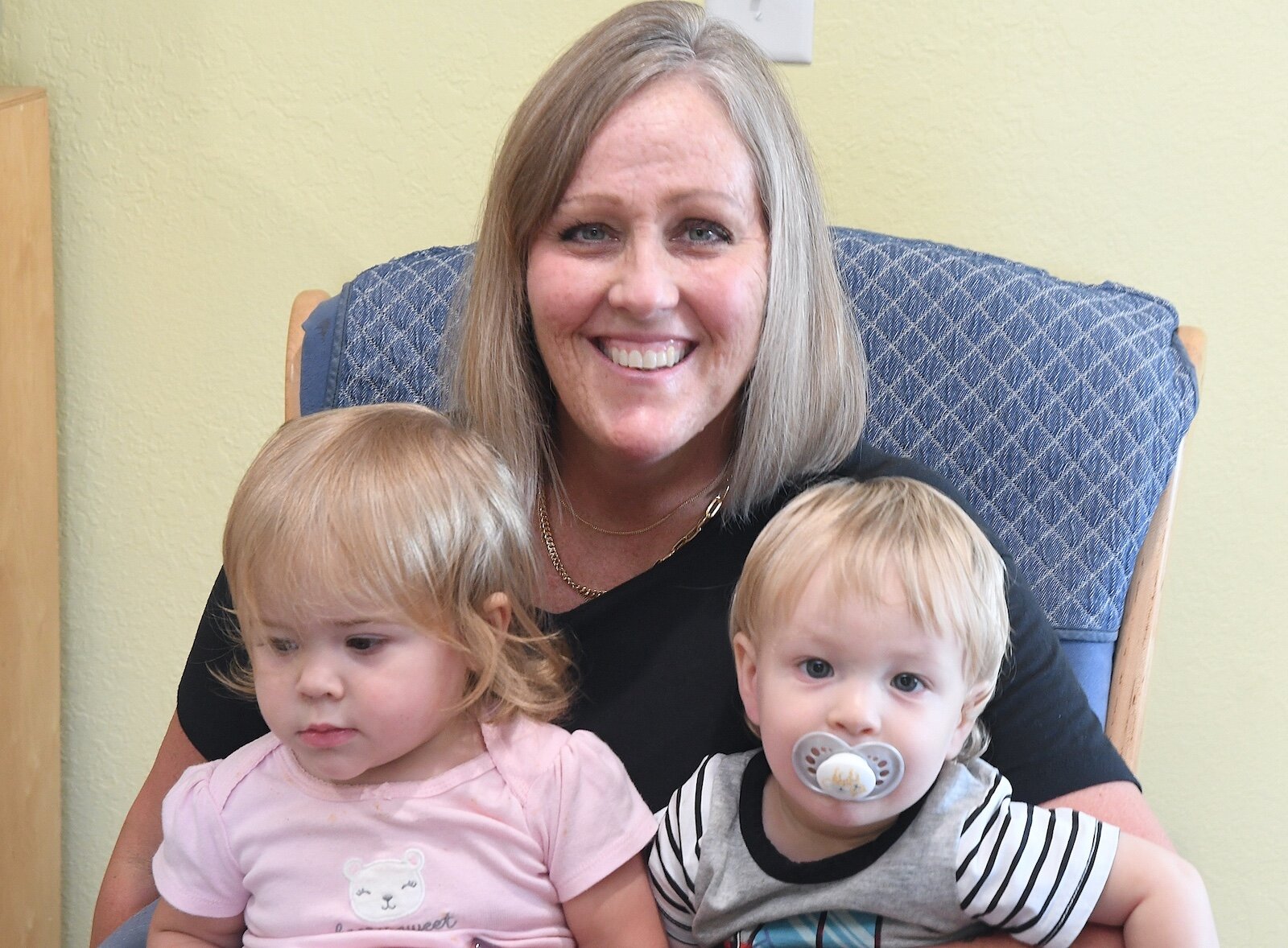
Bergman says Tri-Share was borne of conversations between the Grand Rapids Chamber of Commerce and a coalition of business and community leaders and was championed in Michigan’s State House by Rep. Greg VanWoerkem, R-Norton Shores.
“It has received bipartisan support,” she says. “As far as we know it is the first of its kind program in the country.”
People who work for a participating employer and were between 150 percent to 250 percent of the federal poverty level could qualify for the program. For a family of four, that would be an annual salary of around $40,200 to $66,300 per year. The “Economic Policy Institute” says the average child care cost in Michigan for a 4-year-old was almost $9,000 a year. It estimated the annual child care cost for an infant at almost $11,000.
Bergman says the employer identifies employees who qualify and could benefit from the program and signs them up.
During a recent meeting with the three current facilitator hubs she was told that a woman was offered a position with two different companies and she took the job with the company that was participating in Tri Share.
“This tells me that this is really working as an attraction and retention tool for employers,” Bergman says.
“These ALICE families are not eligible for child-care subsidies from the state, but they still struggle to work and to pay the high costs of child care,” says Bergman.
Child care as a recognized business
Child care was in crisis mode even before the pandemic hit, says Kathy Szenda-Wilson, co-Executive Director of BC Pulse and Battle Creek City Commissioner.
The situation now is “worse than anyone has ever seen,” she says.
Szenda-Wilson is among a growing number of child-care advocates at the national, local, and state levels who say that child care must be recognized and treated as a business. Szenda-Wilson says that many business startups are offered financial and other support to get up and running, but this assistance has not been explicitly extended to child-care providers. She says this creates a climate where people don’t consider child care a viable business.
“We need to continue down that path of trying to really support this,” she says. “Let’s not think of child care as a babysitting service and really start shifting that narrative around being a profession that demands equality and pay that’s commensurate with the level of service it’s providing. There’s a common acknowledgment that people who care for the oldest and youngest are woefully underpaid, but I don’t think people fully understand the economic implications of that.”
In Calhoun County, the hourly median wage for child care workers is $11.24, $15.99 for a preschool teacher, and $22.98 for a child-care center director.
To supplement her income as a child-care provider Olsen, who has a Master’s degree in Counseling specializing in Early Childhood Development, says for 10 of the 27 years she has been a child-care provider, she was employed as a Crisis Counselor with Calhoun Community High School. She says she would open earlier in the morning for daycare and close later because licensing required her to be there 52 percent of the day.
“It covered the bills and we had a double income, but when I chose to open a child-care business, I swore I would keep it affordable for families and I feel like we’re one of the least expensive in Calhoun County. If I had charged more, I probably wouldn’t have been working two jobs, but it’s also important for me to give back to the community.”
Olsen says Kosarue and family members were a huge help while she had those two jobs.
Moore says, “It’s tough to keep people in child care because of the challenges of the job, the low pay, and the really long hours that they work.” Moore says instead of being a child-care worker an employee can work at a car wash and make $12 to $15 an hour or go into manufacturing for $3 more an hour than they were making in child care.
Pay to child-care staff continues to be low as staff salaries account for about 85 percent of the costs associated with early childhood care, Szenda-Wilson says.
“That in and of itself as a business model is a losing proposition and yet our economy’s recovery depends on having strong, effective, quality early childhood programs. We need to figure out how that’s going to happen and build a political and public will to understand the need for it.”
Gov. Gretchen Whitmer has taken steps to build that political and public will by investing $1.4 billion in the state’s child-care system using the federal dollars that went into the recently approved state budget. This investment is expected to have an immediate impact on families with young children, and to close funding gaps in the early education system that have destabilized the early childhood workforce and left wide swathes of the state in “child care deserts.”
A ratio of more than three young children for every licensed child-care slot constitutes a child care desert, according to a 2017 report by the Center for American Progress. This definition is derived from U.S. Census Bureau findings that show approximately one-third of young children are regularly in the care of someone who is not a relative. When the number of licensed child care slots is insufficient to reach at least one-third of young children under age 5, the likelihood that parents face difficulty finding child care increases. This could affect employment decisions or force families to turn to unlicensed options.
Michigan’s $1.4 billion allocation in the state budget will expand access to child care, helping families get back to work by making 105,000 more children eligible for low or no-cost care and increasing rates and issuing stabilization and startup grants for child-care providers, says a press release from Whitmer’s office. “It also delivers a one-time, $1,000 bonus to child-care workers, who work hard every day taking care of our kids. Investing in child care is a shared priority that helps families and businesses thrive as we usher in a new era of prosperity for our communities.”
Included in that $1.4 billion allocation are funds to stabilize child-care businesses: $154.9 million will be used to raise child-care subsidy rates by 20 percent for providers to move closer to the market rate for child care and $645.6 million will be used to provide business stimulus grants to all child care providers to help them remain open and serving Michigan families.
While that $700 million may look like a lot of money, Szenda-Wilson says that pool of funds will be divided up among Michigan’s 83 counties.
“Based on 2019 figures we calculated what it would cost us locally if we wanted to increase wages just so all child-care professionals were making a livable wage,” she says. “In just the city of Battle Creek, we estimate that we have 520 members of the early childhood workforce. If we were to bring child-care wages up to livable wages it would cost us annually $2.2 million a year. We frequently subsidize early childhood work through grants and if we were to go this route, it would be an unsustainable plan.”
Szenda-Wilson says these grant dollars are “great for getting centers up to snuff to get the materials they need and to install necessities like HEPA filters and while we need to be taking advantage of any dollars that are coming in, we need to be screaming from the rooftops that it’s not enough. We need bold moves at the national level.”
Bergman says she hopes the historic levels of state spending on the childcare system will lead to systemic change. She says that 95 percent of Michigan’s in-home or center childcare providers are women-owned and 40 percent of these owners are women of color.
“They are a small business sector that needs our support,” she says. “Now that it’s becoming an economic issue, people are beginning to pay attention.”
Olsen says it’s no longer a choice.
“You have to start looking at it as a business and we should start looking at it as a top-priority business,” she says. “If employees can’t come into work because they can’t find child care, businesses can’t operate. There is a trickle-down effect.”



